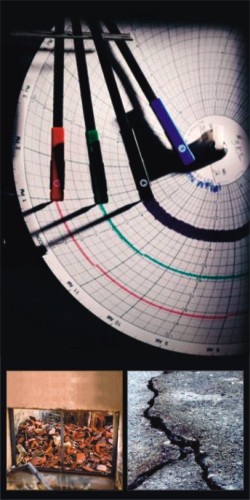A Crack in Dimension
By Sabhanaz Rashid Diya
The issue of Haiti has been discussed to death. Telegraph UK expects the death toll to hit 200,000, while anger, violence and despondency exude from the rubbles as international aid seeps in through a slow process. However to some, the devastating 7.0 earthquake is not a surprise. In an interview, Robert Yeats (a professor emeritus in geoscience at Oregon State University in Corvallis) explains how a large fault runs near the capital of Port-au-Prince, and is a region long known to be seismically active. What was tragic was that it happened to a part of the world that was least prepared.
So, why should we, a country far away from the Caribbean basin should even vaguely be  concerned? Our police officials on UN-mission at Haiti are safe, their families taken care of, we've sent our condolences and now we can blissfully slip into a slumber.
concerned? Our police officials on UN-mission at Haiti are safe, their families taken care of, we've sent our condolences and now we can blissfully slip into a slumber.
How Bangladesh Seeps Into the Picture
The problem unfortunately lies in the fact that if Bangladesh doesn't raise an eyebrow and start thinking about earthquake engineering now, we might as well collide into a similar catastrophe, if not greater. Although we experience minor jolts now and again (and more prominently so, over the past few years), most of our population is clueless about earthquake as a looming threat. Experts say Dhaka has gone 130 years without a major quake while Chittagong has crossed 250 years and Sylhet about 100 years. This 'seismic gap' raises the prospect of a powerful earthquake striking Bangladesh sooner rather than later.
“Bangladesh has some major fault lines, including the Dauki fault, Madhupur fault and the tectonic plate boundaries,” points out Dr ASM Maksud Kamal, national expert on Earthquake and Tsunami Preparedness of the Comprehensive Disaster Management Programme (CDMP) at an interview with Star Weekend Magazine. “Our research shows that a lot of energy has built up in these fault lines over the last century or so. Small quakes have occurred, but the epicentres of these releases have not been along the fault lines where the energy has built up. Fear is that the pent up energy will be released soon, triggering a major earthquake in Bangladesh.”
Sitting on several focal points of tremor, the pounding question is when, rather than if Bangladesh will be struck with a ground-crunching devastation.
The Blame Game
Unfortunately, as mentioned earlier, the local infrastructure is least prepared to handle a powerful quake. Dhaka is one of the most quake vulnerable cities in the world after Tehran and the rising skyscraper-ish structures are a standing testament to how little concerned we are about the consequences. A CDMP report shows over 250,000 buildings across Dhaka, Chittagong and Sylhet are incredibly vulnerable to earthquake, and when struck, the expected death toll would exceed 100,000. Unplanned urbanization can be fatal. Most buildings in the city are “soft-storey”, meaning they are more prone to collapse and God forbids if you're in Old Dhaka. In addition, the grounds on which the buildings sit are sandy and usually not properly compacted during construction.
Fingers can be pointed at real estate companies for flouting people's safety over making profits, and not obliging to National Building Code (BNBC). However, REHAB argues how few, reputable real estate companies are actually members of REHAB and follow BNBC, while others are private builders who construct in a slipshod manner. On another hand, government concerns over earthquake have been limited. Although CDMP has rounded up a contingency plan, implementation is far from being a reality.
The Fire Department admitted that with new equipment and trained instructors who are training 62000 community volunteers who will swing into action in case of a disaster; earthquake management has been taken in serious account recently. The collapse of the Phoenix Building in 2006 was a learning experience for all, although the scheme might take a while to complete.
What Now?
The answer to every plight is as simple as taking responsibility. Unawareness and lack of urgency are key setbacks, and greater importance should be given to spreading information from government officials to the common man. Academic institutions and corporate establishments can easily include a simple earthquake management training led by the Fire Department for its students and employees. Surveys have shown the training is cost-effective and can be coordinated effectively if facilitated accordingly. The benefits of having community workers and adequately informed individuals can be surmountable at the offset of a crisis.
Experts pointed out how people do exactly the opposite of right during a crisis. In 2008, a minor jolt resulted in students from a local university to jump from balconies, resulting in injuries and thus, further complicating the issue. A well rounded awareness campaign on the does and don'ts can be impactful in not only reducing earthquake unpreparedness, but also saving lives.
An impoverished region like Haiti has met its devastation. If Bangladesh clings on to its perspective of being viewed as a third-world country scratching off international aid and cannot mobilize its people-driven economy to take necessary earthquake management awareness in the near future, we might be making a mistake bigger than what we can afford.
Like Zain al Mahmood summed it up in his Star article, the tectonic clock is ticking.
References
Telegraph UK
Reuters
Scientific America
The Star Weekend Magazine
NY Times Online
